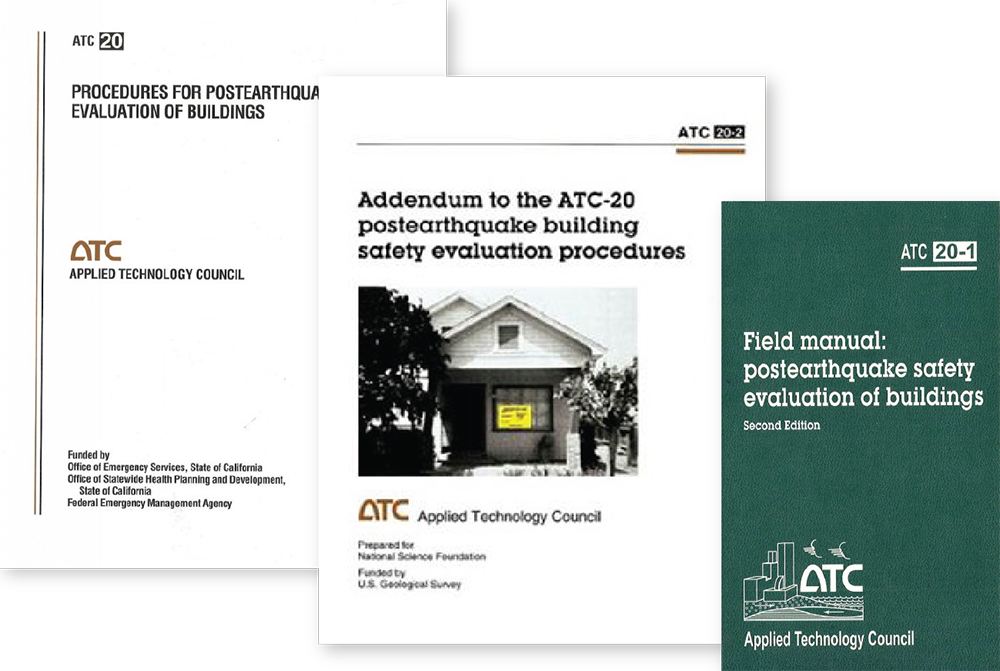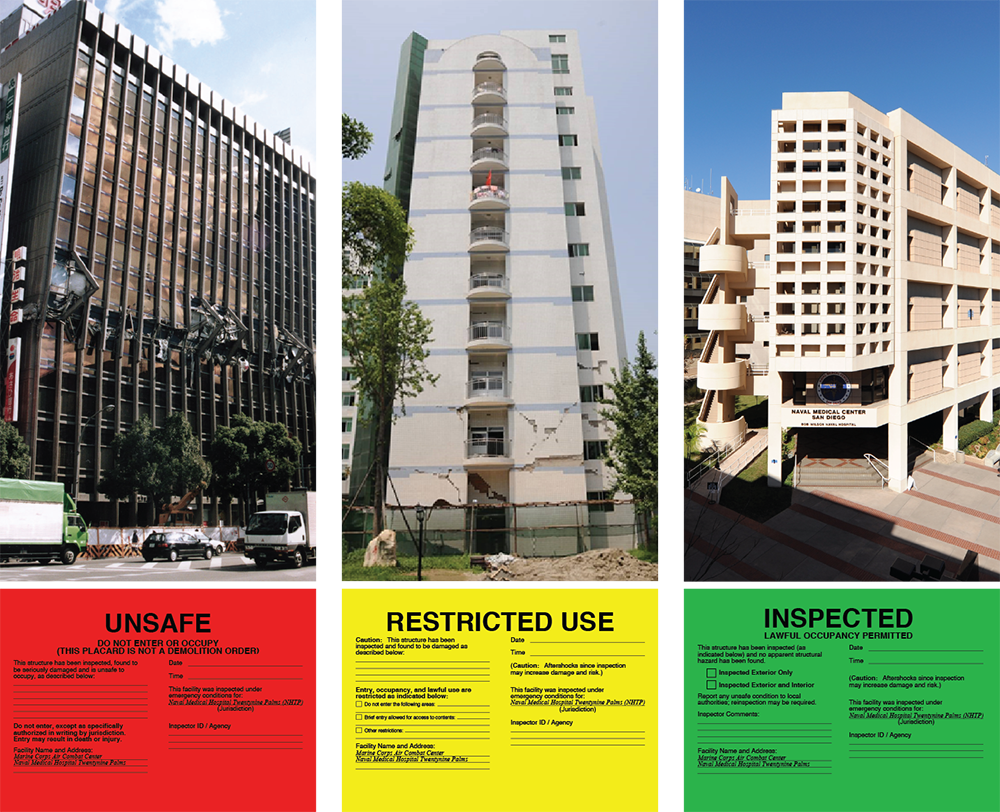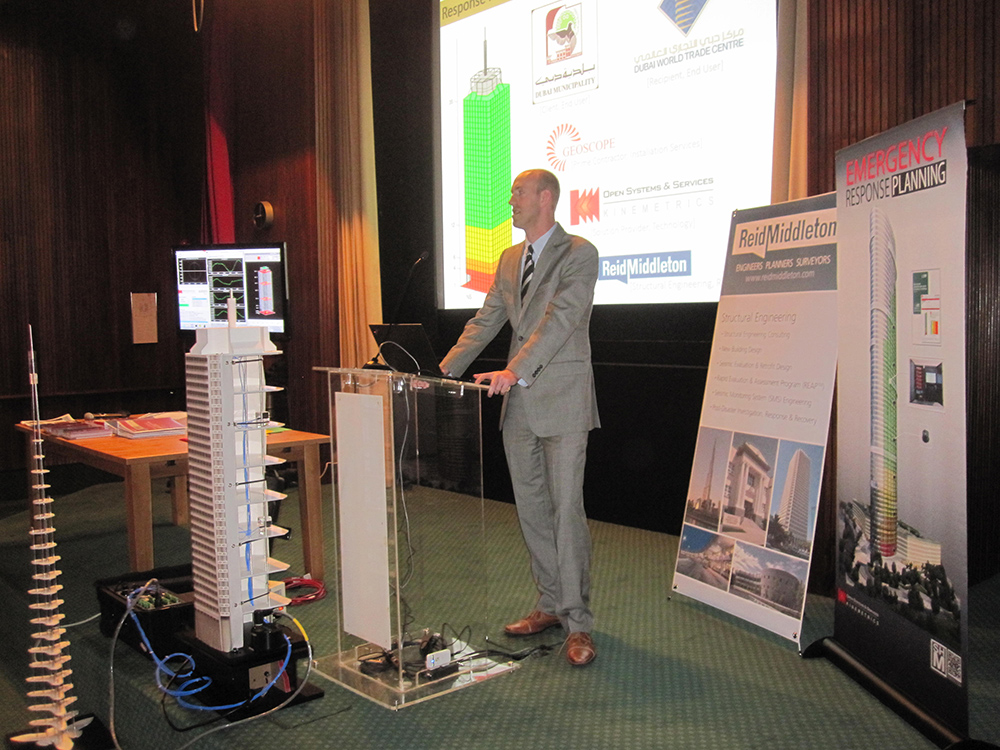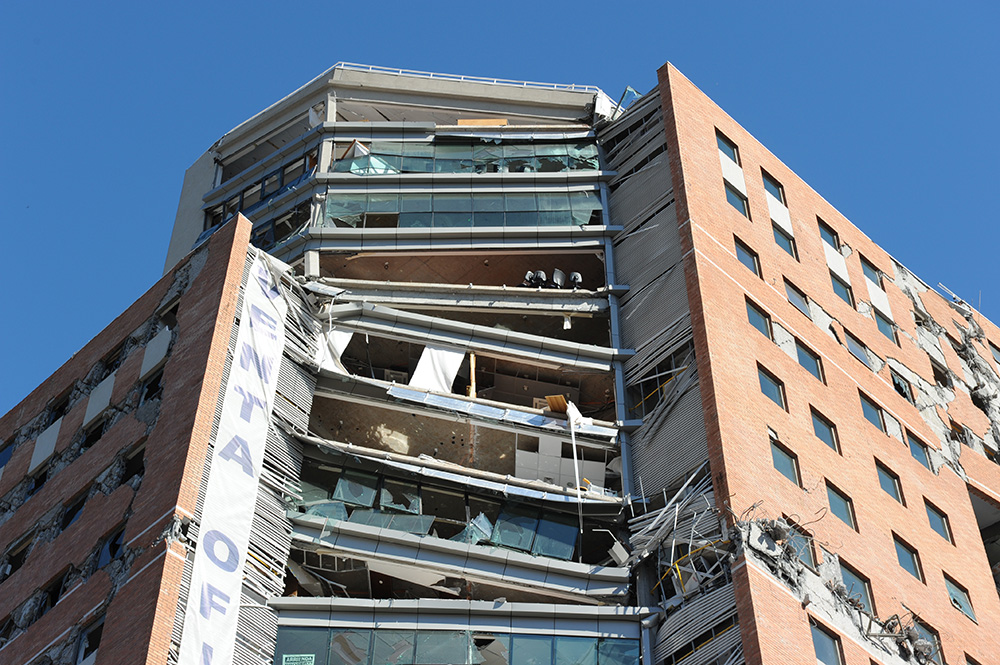Drop, Cover, & Hold On!
Alright, let’s not get ahead of ourselves. First, there’s the earthquake. The ground starts shaking, books start falling off the shelves, your over-priced coffee starts sloshing out of the cup…in the words of Dennis Hopper in Speed, “What do you do?”
As you may recall from those earthquake drills in third grade (or so I’ve heard – I grew up in Idaho, so our drills were for fires and bear attacks), follow the recommendations of the American Red Cross and “Drop, Cover, and Hold On”:
- Drop to the ground, get under a sturdy table or desk
- Cover your head
- Hold On!
Does that help??? Well, check out this unreinforced masonry building that collapsed during the 2010 Christchurch, New Zealand, earthquake. If you look closely, you’ll see that a kitchen table and chairs are supporting the collapsed roof, illustrating that the safest place to be during an earthquake is under a sturdy table or desk (download this poster here).
Then, if accessible, grab your keys, wallet, purse (or man-purse), follow exit signage, and safely exit the building to an evacuation area.
Okay, now what do you do? This is where ATC 20 steps in like the triple-A guy….
What is ATC 20?
Originally developed 1989 by the Applied Technology Council, ATC 20 is essentially a standardized set of procedures for evaluating buildings after an earthquake to determine if they’re safe to occupy. In the same way that the building code is the standard of care for the design of new buildings, ATC 20 is the standard of care for evaluating building safety after earthquakes. These procedures are outlined in the following three documents, available for purchase at www.atcouncil.org:
- ATC 20: Procedures for Post-Earthquake Safety Evaluation of Buildings
- ATC 20-1: Field Manual
- ATC 20-2: Addendum

Put simply, the objective of these documents is to provide a consistent way of determining if buildings should be placarded as “red, yellow, or green” after an earthquake:
- Inspected (Green-tagged): Safe to occupy without restrictions
- Restricted Use (Yellow): Some limitation on use, duration, or occupancy; entry restriction maintained by owner/tenant
- Unsafe (Red): No access or use of structure; entry controlled by jurisdiction

Middle: Restricted Use/Damaged Hospital after the 2008 Wenchuan, China, Earthquake.
Right: Inspected/Undamaged Naval Medical Center San Diego (NMCSD) after the 2010 Mexicali Earthquake. (Photos by David B. Swanson.)
Below: ATC-20 Post-Earthquake Inspection Placards. (Image credit: Applied Technology Council)
Who is ATC 20 for?
The ATC 20 program was initially (fortuitously) released one month before the 1989 Loma Prieta Earthquake in San Francisco. With over 150,000 buildings impacted, and around municipal 30 municipal building inspectors and 15 municipal civil/structural engineers doing 10 buildings per day, it would take over a year to get all of the buildings inspected.
How long would you be willing to wait to get back into your home? Into your workplace? (Well, maybe you wouldn’t mind not getting into your workplace for a year).
When it comes to getting people back into their residences after an earthquake, the more volunteers the merrier! ATC 20 training was developed for building officials, civil/structural engineers, and architects – yes – but it also intended for building owners, facility managers, and frankly anyone else who wants to help out with performing ATC 20 inspections. In fact, the training is really oriented toward non-engineers.
Interested in ATC 20 Training?
At Reid Middleton, we design buildings by day…
However, in order to become better engineers and better designers, we also pay close attention to earthquakes and have participated in earthquake reconnaissance and research efforts after most of the significant earthquakes that have happened around the world in the past two decades. We are passionate about structural engineering, public safety, and earthquake preparedness! So, as a byproduct of our reconnaissance experiences and our earthquake safety advocacy, we teach ATC 20 classes to public and private organizations around the country.
I know what you’re thinking – who wants to listen to structural engineers for eight hours?
Touché. Been there, done that.
We include first-hand photography and videos from real-world earthquakes, use demonstration models to illustrate engineering principles, and make the class as engaging as possible. Back in engineering school, I certainly didn’t expect that teaching this class would be a regular part of my day job as a professional engineer. However, after seeing communities living out of tents after earthquakes because they didn’t know their buildings were safe to occupy, for me, leading periodic ATC 20 classes is a small way to disseminate lessons learned for past earthquakes and help our community become better prepared for “The Big One,” but also all of the small ones to come.
If you’re interested in an ATC 20 class, contact us at 425-741-3800.

Additional Resources
- All of the ATC-20 materials (field manual, placards, & checklists) can be downloaded from the Applied Technology Council’s website:
https://www.atcouncil.org/45-downloadable/downloads/107-atc-20-download - California Office of Emergency Services (Cal OES) Safety Assessment Program (SAP):
http://www.caloes.ca.gov/cal-oes-divisions/recovery/disaster-mitigation-technical-support/technical-assistance/safety-assessment-program


